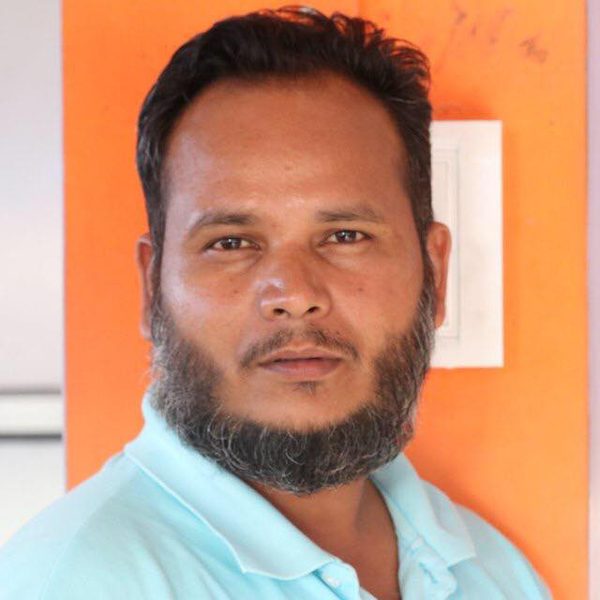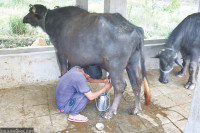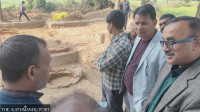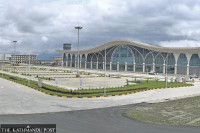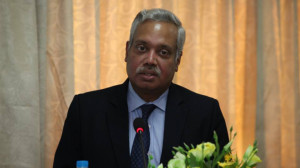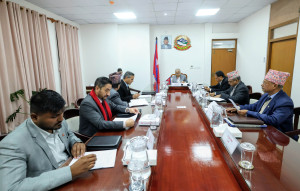National
Maikhola river swallows entire settlement in Rajduwali, Ilam
A massive flooding in the wee hours on Sunday swept away 35 homes.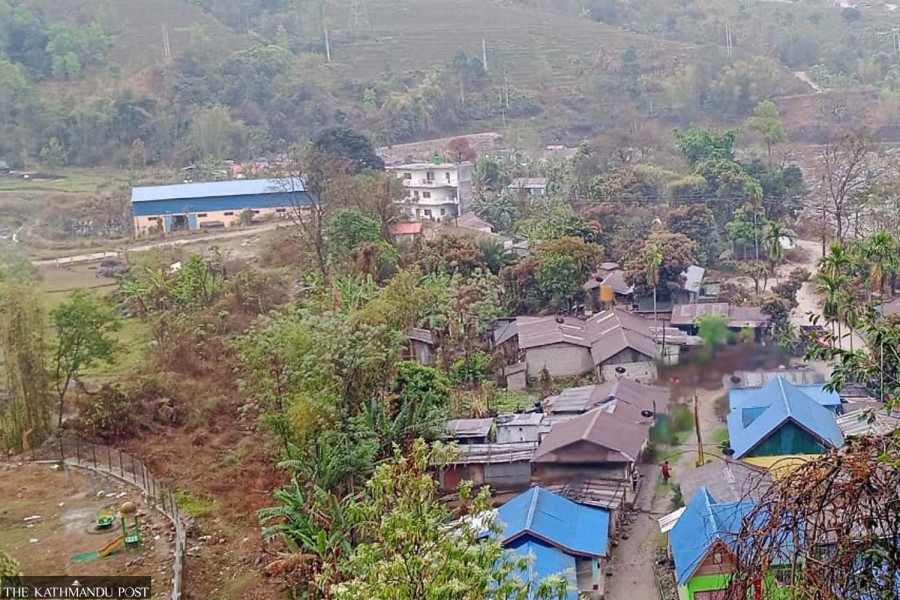
Parbat Portel
It was past midnight on Saturday when the residents of Rajduwali, a small settlement along the banks of the Mai river in ward 10 of Ilam Municipality, were fast asleep. No one imagined that the river, which usually flowed quietly nearby, would suddenly turn into a monstrous torrent. Within minutes, the roaring flood devoured the entire settlement, sweeping away all 35 houses.
“It was around 12:30. I heard a strange sound. It was like the earth itself was moving,” recalled Kanchan Meche, who barely escaped with her life. “When I stepped outside to see what it was, the flood was already at my doorstep. I grabbed my child and ran into the dark, leaving everything behind.”
By dawn, Rajduwali no longer existed. What had once been a working-class settlement of sand miners and labourers now lay buried under mud and debris. The flood, locals say, was the fiercest for decades.
“The river has reclaimed what it once owned,” said Dharma Gautam, a local intellectual of Ilam. He explained that before 1950, the Mai river flowed through this very area. The name Rajduwali, he said, came from a former local officer called Bada Hakim during the Rana rule, Raj Shumsher, who had diverted the river to protect nearby farmland decades ago. “After the diversion, this place remained like an island for years. However, in the 1990s, people began to settle here again. Now, the river has returned to its old path and taken everything with it.”
Every survivor carries a story of panic and loss. Lakpa Sherpa said he escaped moments before the floodwaters hit his home. “There was no time to save anything,” he said, his voice trembling. “We never thought such a thing could happen.”
The story of Garjaman Magar, who had lived in Rajduwali for 15 years, is quite similar. He broke down while speaking. “We’ve had floods before, but never like this,” he said.
Amit Rumdali Rai was celebrating a family wedding when the flood struck. “We had just finished the Dashain rituals with my newly married daughter and son-in-law,” he said. “That same night, the river took our home.” He only survived because a neighbour knocked on his door just in time. “Had they not woken me up, I wouldn’t be here,” he said. “Everything we owned is gone.”
Dukpa Bishwakarma was nearly swept away. “The villagers saved my life,” he said. “Without them, I’d have been carried off with the river.”
The flood, according to ward chief Dilip Pradhan, completely destroyed the homes of 35 families.
Most survivors are now taking shelter in nearby schools, public buildings, houses of their relatives and neighbours or under tarpaulins provided by the ward office. “We have arranged food and temporary shelter, but government relief has yet to arrive,” Pradhan said.
The cold autumn nights have made life even harder for displaced families. “We have only one set of clothes,” said Juniya Meche, an elderly heart patient. “I lost my medicine and everything in the flood. Now, the cold makes it worse.”
A similar tragedy had occurred in Ilam, a hill district in Koshi province, decades ago. “In 1968, the Mai river flooded the same way,” said Gautam. “That flood killed hundreds across Ilam, Darjeeling and Sikkim. This year feels eerily similar—only the faces have changed.”
The sense of déjà vu runs deep in the hills. “Nature’s fury seems to be repeating itself,” said Gautam. “Our elders used to say the river remembers its path. Now we see what they meant.”
Widespread destruction across Ilam
According to the District Police Office in Ilam, 39 people died in floods and landslides across the district. The worst-hit areas include Suryodaya Municipality (5 deaths), Ilam Municipality (7), Sandakpur Rural Municipality (7), Maijogmai (8), Mangsebung (3), Deumai Municipality (8), and Phaphokthum (1).
The floods also damaged several sections of the Mechi Highway and multiple bridges, including the Bailey bridge over the Mai river. “Landslides have cut off key stretches of the Mechi Highway,” said Chief District Officer (CDO) Sunita Nepal. “The section between Banchare Golai and Nepalatar via Biblyate has completely collapsed.”
“We are working round the clock to reopen the main highway,” Nepal said. “Repair work is progressing at high speed.”
The Koshi provincial government has begun airlifting relief materials to the worst-hit settlements. On Tuesday, helicopters delivered supplies to 26 families in ward 10 of Ilam Municipality and 13 families in Mangsebung Rural Municipality. The relief packages—containing mattresses, blankets, rice, lentils, potatoes, salt, oil, and spices—were distributed.
Chief Minister Hikmat Kumar Karki personally travelled to the disaster site with additional aid. “Our first priority is to ensure that no one goes hungry or unsheltered,” Karki said during his visit.
According to Nepal, former provincial lawmaker Suhang Nembang and some other organisations also provided food and clothes to displaced families.
The District Administration Office has appealed for further assistance through social media, emphasising a coordinated approach to relief distribution. “We want all support to reach victims through a one-door system,” CDO Nepal said.
Ilam is the hardest-hit district by the late monsoon rains that wreaked havoc across the country, mainly in the Bagmati, Madhesh, and Koshi provinces. As many as 39 people lost their lives in Ilam alone as the total death toll across the country has reached 56.




 6.12°C Kathmandu
6.12°C Kathmandu